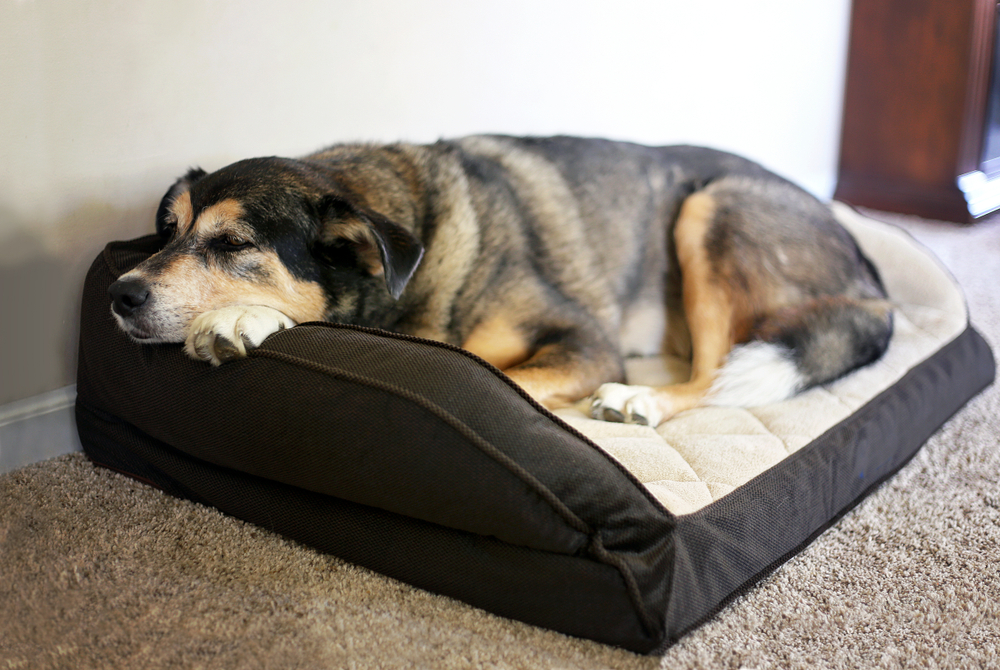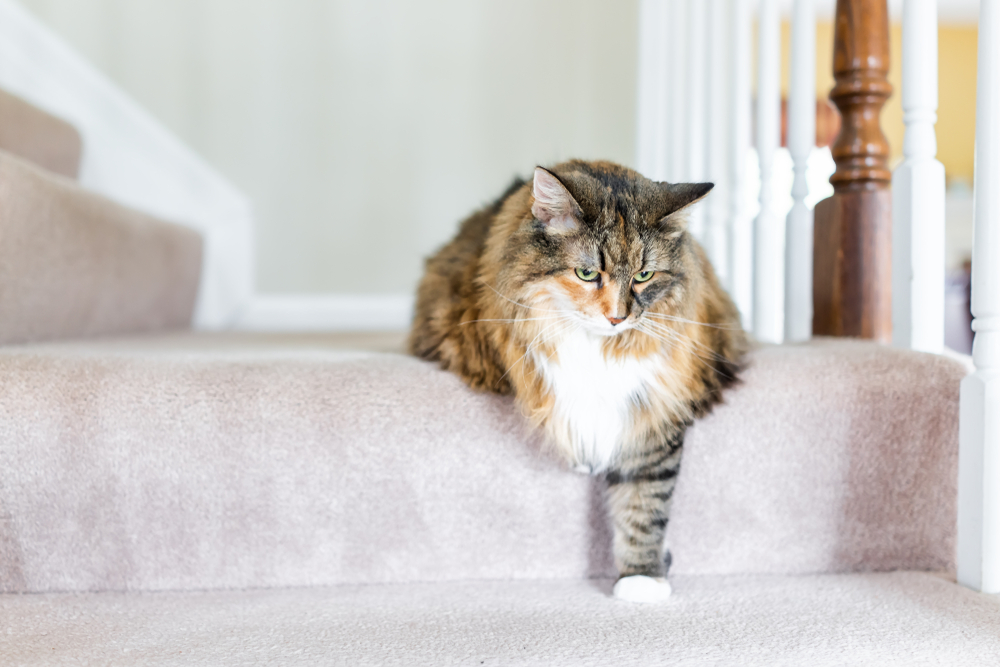From puppyhood or kittenhood, to their grey muzzle years, our pets are family, and constant, loyal companions. Many pets are workout buddies, and your feline companion is often the perfect alarm clock, ensuring you don’t miss a morning workout, or their breakfast. Pets have unique ways of communicating. Subtle signs or behavior changes may indicate an underlying illness or pain. Like people, pets can develop painful arthritis, and many will show only subtle signs when they are young, which may be difficult for pet owners to recognize. In fact, more than 20 percent of dogs, and more than 40 percent of cats may suffer from this painful, degenerative disease. Our Animal Clinic of Council Bluffs team wants to ensure pet owners understand arthritis signs, treatment, and prevention methods for this incurable condition.
What is arthritis in pets?
Arthritis, which is also referred to as osteoarthritis (OA) or degenerative joint disease (DJD), is a progressive, degenerative, and irreversible joint and bone condition that is common in middle-aged and senior pets. Some large-breed dogs may have a genetic predilection for OA, although any pet may be affected. Like human joints, your pet’s joints are protected by cartilage that provides a smooth surface for bones to glide over during movement. Erosion or loss of cartilage over time can lead to joint degeneration and chronic inflammation. OA in pets is characterized by the loss of joint cartilage, a thickened joint capsule, new bone growth around an affected joint, and pain. Underlying arthritis causes include abnormal body confirmation, obesity, nutritional deficiency, or a previous orthopedic surgery.
The two types of arthritis include:
- Primary arthritis — Although age is not a disease, the chronic wear and tear on joints that occurs over time can cause arthritis in older pets. Underlying factors, such as obesity, can increase stress on a pet’s joints, leading to increased arthritis progression.
- Secondary arthritis — Pets who have experienced an injury, such a broken bone, dislocated joint, or a torn ligament, are prone to arthritis from damaged joint cartilage.
Recognizing arthritis signs in your pet
Recognizing OA in pets may be challenging, because the signs may mimic other diseases or problems. Although OA is more common in older pets, some younger pets will have subtle arthritis signs, such as stiffness after vigorous exercise. Common arthritis signs in dogs may include:
- Limping that becomes worse over time
- A stiff gait that increases after rest periods
- Lameness or limping after exercise
- Reluctance to play or exercise
- Pain, or swelling around joints
- Reluctance to jump or climb stairs
- Muscle atrophy
- Slowing down during walks, or other exercise
- Vocalization when touched
Cats have many unique traits, including not exhibiting any obvious pain signs when your Animal Clinic of Council Bluffs veterinarian examines their arthritic joints. Like dogs, cat arthritis signs may mimic other illnesses, such as a urinary tract infection. Common cat arthritis signs may include :
- Urinating or defecating outside the litter box
- Hunched posture
- Increased hiding
- Difficulty grooming, or excessively grooming one body location
- Joint swelling
- Decreased activity
- Behavior changes, like unexpected aggression
- Reluctance to jump
Diagnosis and treatment of your pet’s arthritis
Bring your pet for a veterinary examination if they have any arthritis signs. Our veterinarian will perform a nose-to-tail examination, which will include an evaluation of your pet’s gait, range of motion, and pain response when their joints are examined. Diagnostic tests, such as blood work, to rule out underlying illness and check your pet’s overall organ health may be recommended. Blood tests are critical to ensure your pet’s organs can safely process any medications, which may be required to treat arthritis pain. Additionally, advanced imaging, such as X-rays, may be recommended to further evaluate your pet’s joints and bones. More than 90 percent of cats 12 years and older will show radiographic evidence of arthritis.
Arthritis has no cure, and treatment will depend on disease severity. The goal of treatment is to minimize your pet’s discomfort, and slow disease progression. Arthritis treatment may include:
- Pain medication, such as nonsteroidal anti-inflammatories (NSAIDs)
- Joint support supplements, such as veterinary formulated glucosamine, or fatty acid supplements
- Specialized diet
- Low impact exercise, like walks or swimming, to promote healthy weight management
- Weight loss for overweight or obese pets
- Alternative treatments, such as platelet rich plasma injections
Arthritis prevention and management for your pet

Arthritis is not always preventable in pets, especially for those who have a genetic predilection to the disease. However, maintenance of a healthy body weight is the best defense against painful, progressive arthritis, because excess weight can increase joint stress and degeneration. Additionally, proper nutrition is vital, to ensure your pet gets the required nutrients for healthy bone growth and function. Always consult your veterinarian before changing your pet’s diet, or when choosing a puppy or kitten food. Also, you may be tempted to give your pet your own medication when you see them in pain, but never give your pet any human medications, unless advised by your veterinarian. Other pet arthritis management tips include:
- Providing your pet with soft, padded bedding
- Placing ramps around the house, to prevent your pet from jumping or climbing
- Providing an elevated food bowl to decrease back and neck stress during mealtime
- Scheduling regular veterinary visits to ensure proper pain management, and to monitor arthritis progression.
Call our Animal Clinic of Council Bluffs office if your pet is showing any arthritis signs, or to schedule an appointment to evaluate their joint health.






Leave A Comment